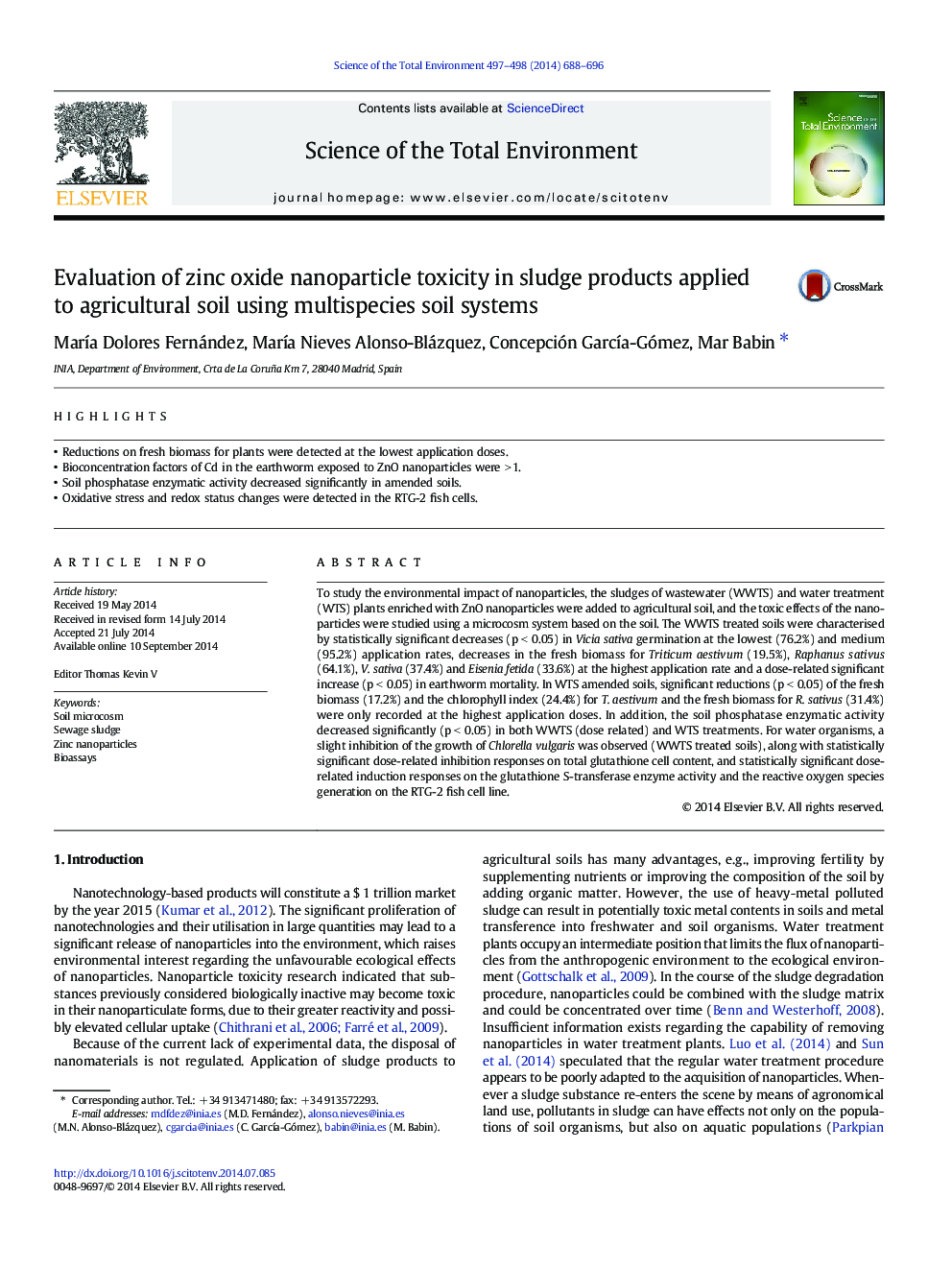| Article ID | Journal | Published Year | Pages | File Type |
|---|---|---|---|---|
| 6328820 | Science of The Total Environment | 2014 | 9 Pages |
Abstract
To study the environmental impact of nanoparticles, the sludges of wastewater (WWTS) and water treatment (WTS) plants enriched with ZnO nanoparticles were added to agricultural soil, and the toxic effects of the nanoparticles were studied using a microcosm system based on the soil. The WWTS treated soils were characterised by statistically significant decreases (p < 0.05) in Vicia sativa germination at the lowest (76.2%) and medium (95.2%) application rates, decreases in the fresh biomass for Triticum aestivum (19.5%), Raphanus sativus (64.1%), V. sativa (37.4%) and Eisenia fetida (33.6%) at the highest application rate and a dose-related significant increase (p < 0.05) in earthworm mortality. In WTS amended soils, significant reductions (p < 0.05) of the fresh biomass (17.2%) and the chlorophyll index (24.4%) for T. aestivum and the fresh biomass for R. sativus (31.4%) were only recorded at the highest application doses. In addition, the soil phosphatase enzymatic activity decreased significantly (p < 0.05) in both WWTS (dose related) and WTS treatments. For water organisms, a slight inhibition of the growth of Chlorella vulgaris was observed (WWTS treated soils), along with statistically significant dose-related inhibition responses on total glutathione cell content, and statistically significant dose-related induction responses on the glutathione S-transferase enzyme activity and the reactive oxygen species generation on the RTG-2 fish cell line.
Related Topics
Life Sciences
Environmental Science
Environmental Chemistry
Authors
MarÃa Dolores Fernández, MarÃa Nieves Alonso-Blázquez, Concepción GarcÃa-Gómez, Mar Babin,
